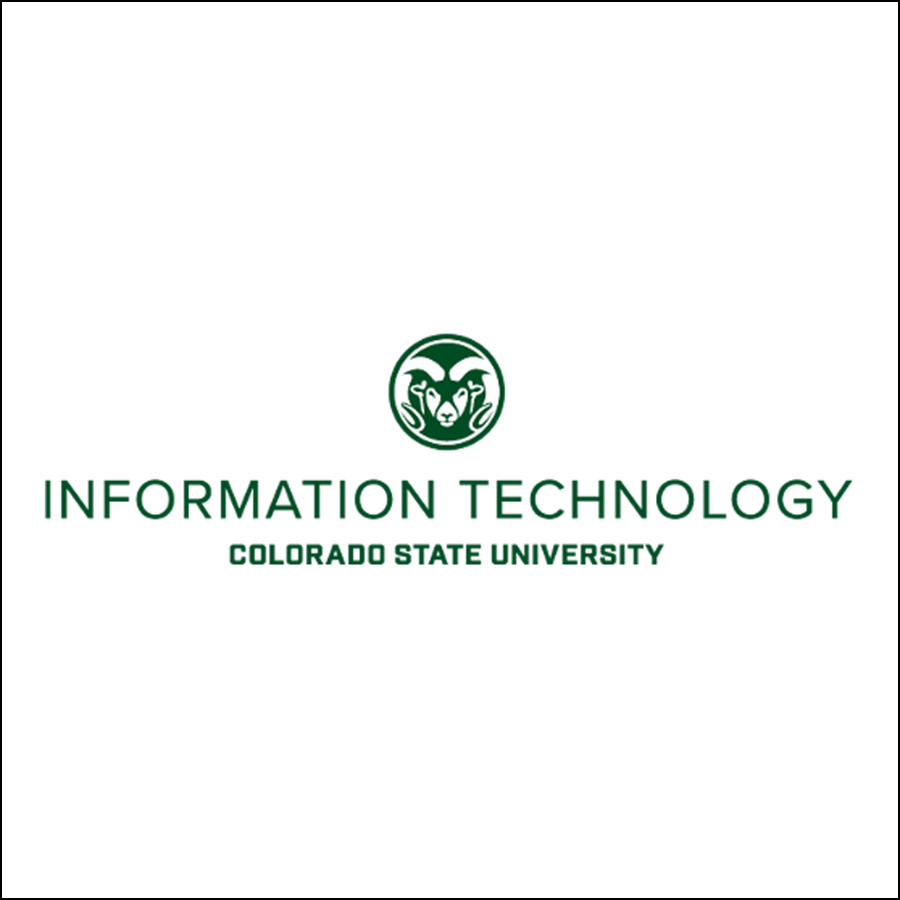 In a rapidly evolving technological landscape, understanding the benefits, applications and risks of artificial intelligence is paramount.
In a rapidly evolving technological landscape, understanding the benefits, applications and risks of artificial intelligence is paramount.
This was the focus of a recent AI event hosted by the Division of IT on March 28 at the Ingersoll Hall Event Center that explored its implications for the Colorado State University community and beyond.
The event commenced with Vice President for Information Technology and Chief Information Officer Brandon Bernier and Provost and Executive Vice President Marion Underwood announcing the establishment of a cross-campus AI task force for CSU Fort Collins. This task force aims to assess the current state of AI both at CSU and nationally, envision a future scenario two to three years ahead and formulate recommendations for next steps.
“AI is a transformative force that demands our attention and proactive engagement,” Bernier said.
Underwood emphasized that it is CSU’s responsibility as an institution of higher education to keep AI in our line of vision and to educate our students about the potential of AI.
“Students will be entering a world where AI exists and is used widely,” Underwood said. “We must prepare them for how to critically work with these tools — understanding what value they can add, but also the limitations.”
Experts in AI explored various topics, shedding light on present realities and potential trajectories. This included insights from EAB, a consulting firm specializing in educational institutions, serving approximately 2500 schools, colleges and universities.
“This is here to stay, and it’s going to explode,” said Dawn Russel, senior director of research and advisory services at EAB. “We do have to be conscious about how we are using it. You have to think about the accuracy of the info, whether or not it’s giving you want you want. I do believe we will be able to get final output of AI. But right now, we don’t have that.”
Russel went on to discuss the history of AI and emerging trends in its use in higher education, noting that its integration with every subject matter is critical: “Every program has to have AI, it’s part of whatever we do and whatever we teach.”
Karen Estlund, dean of Libraries, underscored AI’s transformative impact on archival practices and cultural heritage access to information for teaching and research. While acknowledging its potential to enhance workflows and accessibility, she also raised concerns about widening the digital divide, reinforcing biases, and environmental impacts.
Mario Arango, associate legal counsel in the Office of the General Counsel, and Steve Lovaas, chief information security officer for the Division of IT, addressed the legal and security dimensions of AI usage. Arango cautioned against blind reliance on AI outputs, highlighting the inherent risks in data training processes.
Lovaas distinguished between private and public AI, emphasizing the security disparities between the two. He recommended private enterprise solutions like Microsoft Copilot for enhanced security. He then referenced the impact generative AI can have on phishing attacks, noting attackers used to have to choose between being fast or being convincing. With AI, they no longer must pick just one. Knowing this, we must alter our awareness campaigns and technical defenses to spot better-crafted attacks.
Two panels rounded out the day, speaking on how AI is impacting the teaching and research communities. All agreed that AI introduces tremendous growth in all areas.
“There are significant opportunities for revenue, research, and knowledge generation with AI,” remarked Joe Strecker, Ph.D., research IT manager for the College of Veterinary Medicine and Biomedical Sciences.
Bruce Draper, Ph.D., chair of the Department of Computer Science, emphasized the importance of human skill development alongside technological advancements, advocating for AI as a tool to augment rather than replace human processes.
The summit concluded with reflections on AI’s integration into daily life by the Division of IT employees, illustrating its diverse applications from coding to meal preparation.
In summarizing the discussions, Draper urged readiness for forthcoming AI revolutions: “Buckle up, it’s not over yet. There are revolutions in AI coming not in decades, but in years and months.”
The summit provided a thorough examination of AI’s multifaceted impacts, highlighting the need for proactive engagement and informed decision-making. As CSU navigates the AI era, the summit stands as a pivotal moment for fostering dialogue, collaboration, and strategic action, organizers said.
As the university forms a cross-campus AI team, leaders urge individuals to continue to explore AI’s value in their current roles.
Rob Mitchell, Ph.D., professor of entrepreneurship and innovation and academic research director at the Institute for Entrepreneurship at the College of Business, stressed the urgency of adapting to rapidly evolving technologies like AI.
“Too often, we and other large organizations spend more time talking about what we could do with emerging technologies rather than actually implementing them,” Mitchell said. “We need to cultivate an organizational ability to move quickly on innovation.”